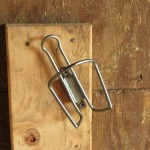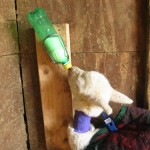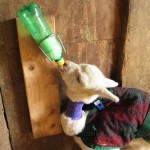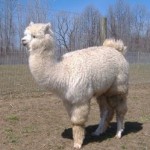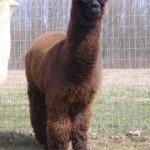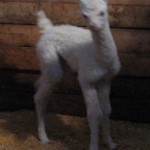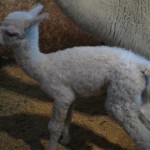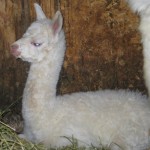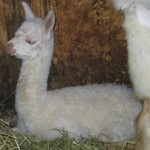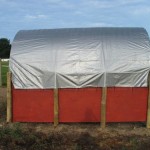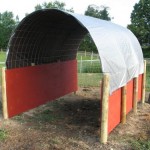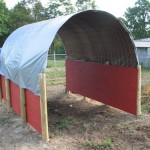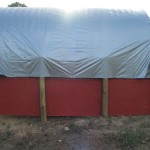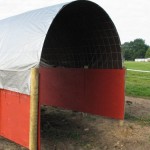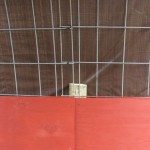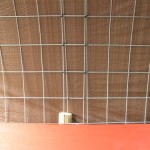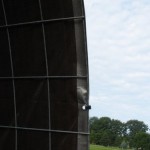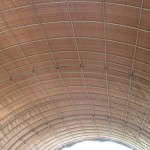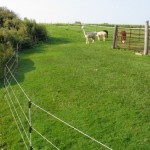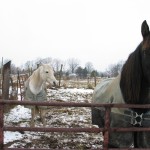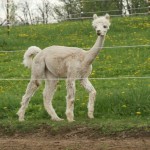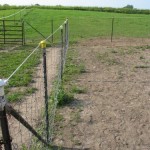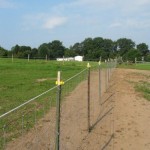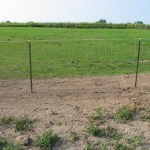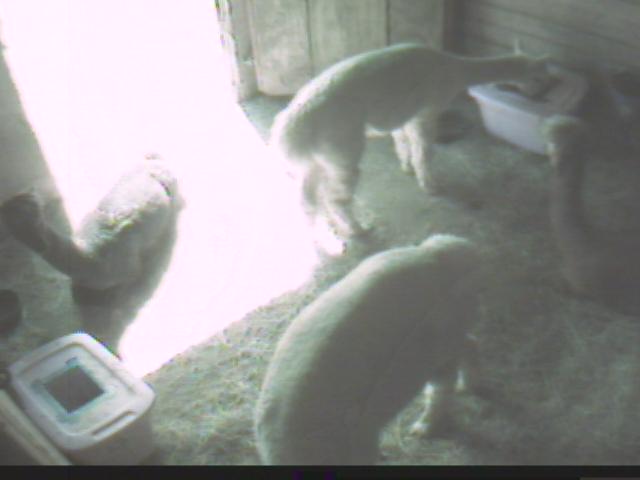We were thrilled with our first cria and with it came instant challenge. It was the dam’s first cria and she didn’t have any milk and when we got that going she wouldn’t let baby nurse. (Trust me, we tried everything) Of course that means we now have a bottle baby on our hands.
Thankfully Albina would actually drink from a bottle and not only that it turns out very little intervention from us was needed to get her going. We noticed she liked to drink her milk in the corner of the stall and when she got hungry would always go to the same corner. This got me thinking that I could fashion some sort of bottle holder so I could just put the bottle in there and let her go at it.
If you haven’t figured me out yet I’m one for recycling “junk” found in the barn. I found my old bike and eyed up the water bottle holder. I bet it would hold a baby bottle upside down no problem. So I confiscated it. I put it next to the wall and noticed it didn’t give enough clearance between the bottle and the wall so I dug around the barn again. Ah ha! A section of 2×6. Perfect. Nailed the 2×6 to the wall and screwed the bottle holder to the 2×6 at an angle. The bottle holder bends easily and I could work it so that it would best hold the bottle of milk.
The end result was perfect. I tested it out and Albina immediately took to it. She seemed to enjoy drinking this way and now runs to the corner and nudges the bottle holder when she’s hungry and wants me to come out with more food. I love it for night feedings. I use a smaller 8oz human glass bottle. After warming the milk I stumble out, put the bottle in the holder and stumble back to bed.
A few notes:
- Milk needs to be kept below 45 deg F to prevent spoiling
- Warm milk will spoil within 15-30 min
- Newborn cria need milk to be warmed close to 100 so they are not spending calories to warm milk and to prevent a drop in body temperature.
- When cria are gaining weight regularly, weather is cooperative, and body temp flux is no longer a worry cold milk could be used so bottles can be kept out longer without supervision.
- I have read and heard a lot of conflicting information about warm milk vs cold. Consult your vet and do research before offering cold milk to any cria.
- Cold Milk Cons: body temp loss and promotes diarrhea.
- Cold Milk Pro: Ability to offer free choice of milk (if kept cold with an ice pack) prevents cria from over eating in one sitting which tends to lower problems with digestion and lower the chances of them getting diarrhea.
Why bottle feed this way? If you have a male cria, bottle feeding with little to no human intervention could help prevent berserk syndrome.
